Whiteflies are a major threat in greenhouses. For feeding, they directly harm plants by perforating leaves, and indirectly they can transmit viruses and create an optimal feeding ground for molds. The flies quickly develop resistance against pesticide chemicals, which may also affect the natural predators of the fly. Biological control with for example Encarsia and Eretmocerus parasitoids wasps is possible but requires proper management of a complex and delicate balance.
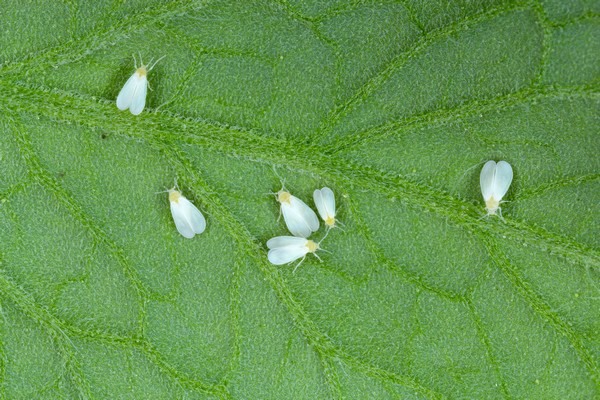
Intra Eco Shield is a liquid nutritional plant enhancer that contains a unique formulation with a high concentration of plant-available orthosilicic acid. It physically hardens the plant and improves its water and calcium management, making the plant more resistant to stress situations. The effect of Intra Eco Shield was evaluated on whitefly infection at the horticulture research center of Botany Group (Horst-Meterik, The Netherlands).
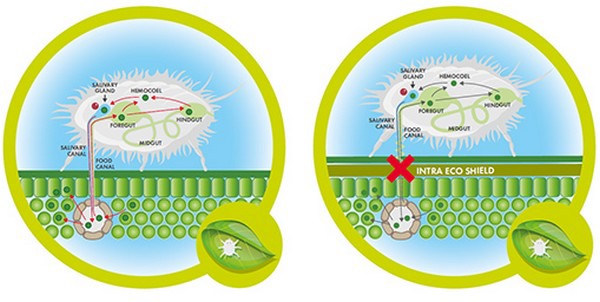
Practical test set-up
The test was performed in a greenhouse with tomato plants representative for commercial production (Figure 3). On day 13 after set-up, whiteflies (Trialeurodes vaporariorum) were introduced in the greenhouse. Foliar application of Intra Eco Shield 500 ml per hectare was performed preventive on day -11, day -6 and day -1 before infection, and post-infection on day 6, day 13, day 20, and day 27 (Table 1).
Weekly evaluation of whitefly reproduction was started 13 days after infection. To follow the whitefly life cycle from egg to hatched pupae, 25 leaf punches (ø1.5cm) were taken at leaves at the same height at each time point. In the week of the last application of Intra Eco Shield, the assessment was finished.
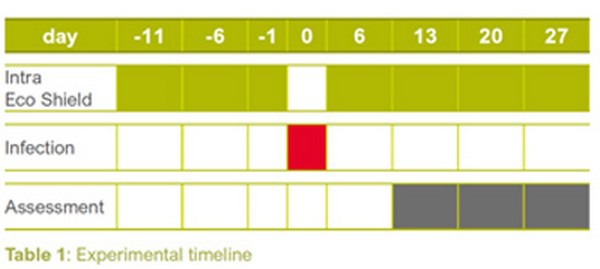
Figure 2 provides an overview of the total number of whitefly eggs, crawlers, larvae, pupae, and hatched pupae per 25 leaf punches of untreated controls and after Intra Eco Shield treatment at three-time points after infection. The total number of eggs and crawlers did not significantly differ between treated and control plants, but treatment with Intra Eco Shield resulted on day 27 post-infection in a 58-67% reduction in the total number of larvae, pupae, and hatched pupae. These data suggest that flies did not distinguish between treated and untreated plants to place their eggs, and treatment did not affect the hatching of the eggs, but the number of crawlers that transitioned to larvae was significantly reduced. This suggests that Intra Eco Shield treatment impaired the development of the crawlers, probably by hardening the plant leaf to prevent crawler feeding.
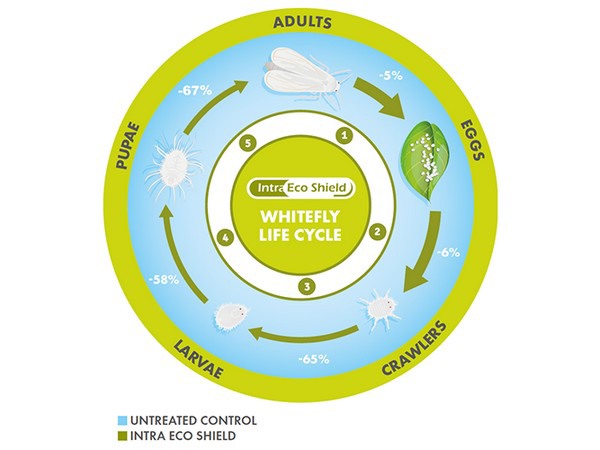
Figure 2: Whitefly life cycle and percentage reduction on day 27 with Intra Eco Shield. The graphs show the total number of whitefly eggs, crawlers, larvae, pupae, and hatched pupea per 25 leaf punches of untreated controls (blue bars) and after Intra Eco Shield treatment (green bars) at three time points after infection.
The use of Intra Eco Shield in whitefly control
Once-a-week preventive application of Intra Eco Shield on tomato plants breaks the whitefly life cycle and reduced the whitefly development into adults with 67%. This suggests that leaf hardening by Intra Eco Shield prevents crawlers from feeding, causing their starvation. No spraying residues were observed after application, since Intra Eco Shield does not contain any oily or greasy ingredients, and no phytotoxicity was observed. The natural ingredients of Intra Eco shield are not harmful to other organisms, making it possible to combine the plant strengthening application of Intra Eco Shield with biological approaches. In this way, Intra Eco Shield reduces the pest load, thereby making biological control easier.
For more information: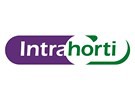
Intrahorti
Voltaweg 4
5466 AZ Veghel, Netherlands
info@intracare.nl
www.intracare.nl
